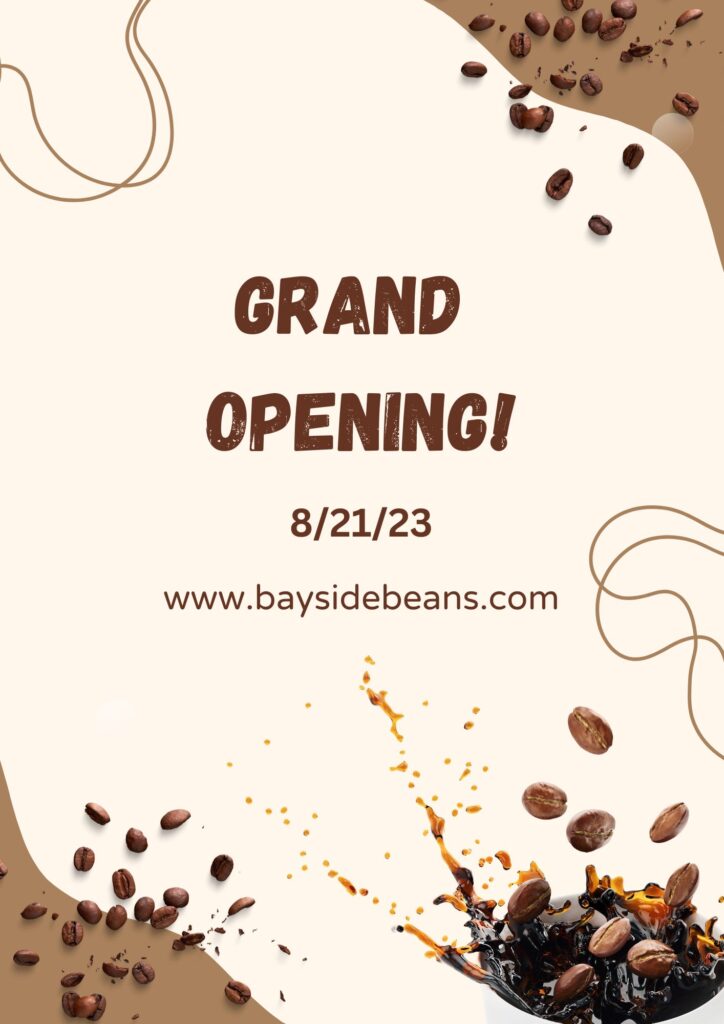Your cart is currently empty!
Grand Opening 8/21!
Progress is coming along nicely here at Bayside Beans, and we are on track to have our virtual shelves stocked by 8/21! We have been working hard testing out beans from various origins and suppliers, dialing in the roast profiles, fine tuning the packaging, and adding features to the website to ensure a smooth and secure coffee buying experience. Now we are just stocking up on beans!
So what exactly do we mean when we talk about dialing in a roast profile? Well, coffee is an agriculture product, and the crop varies a lot from region to region, year to year, and even farm to farm within a region. There are a lot of factors that affect the way a coffee bean behaves in the roaster. Getting a roast profile dialed in generally involves first roasting a new bean with a relatively standard profile; starting with high heat & gradually ramping it down throughout the roast, monitoring how the bean progresses through the stages and reaches first crack, and then making some tweaks to the roaster’s temperature/airflow/drum speed, and carefully tasting and comparing the results of each test batch (more info about first crack on the roasting page).
It’s worth creating a separate post digging more into this because the technical side of roasting is pretty fascinating and I could talk about roast profiles for hours, but for now we are happy to say that we are quite pleased with the results for the three varieties that we offer. The Ethiopian Yirgacheffe is the lightest of the three and has a bright citrusy tea character, it is our favorite to drink black. On the opposite end of the spectrum, the Sumatra is dark and bold, without being burnt or charred tasting. It’s the best option for espresso or any coffee drinks that you want to add milk to. And in the middle, we have the Costa Rican Tarrazu, which is just a great all-around, approachable, coffee.
We don’t offer light/medium/dark roasts for each specific variety because dark roasting the Yirgacheffe would destroy the brightness that makes it so unique. Or light roasting the Sumatra would result in underdeveloped cardboard flavors. No matter how you roast it, you can’t turn a Sumatra into a Yirgacheffe, or vice versa. We feel that roasting each bean in the way that brings out the best characteristics of that bean, and then offering three different varieties that lend themselves well to light/medium/dark roasts, was a much better way to offer you both quality and variety. So, try them all soon, and let us know what you think!

